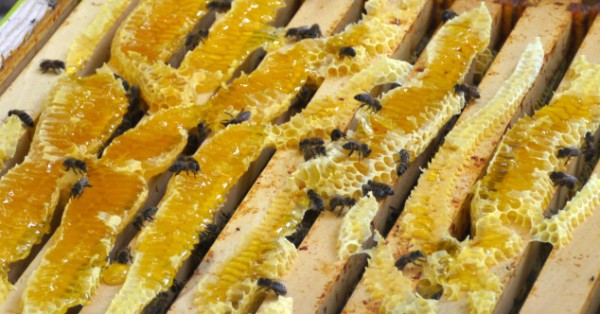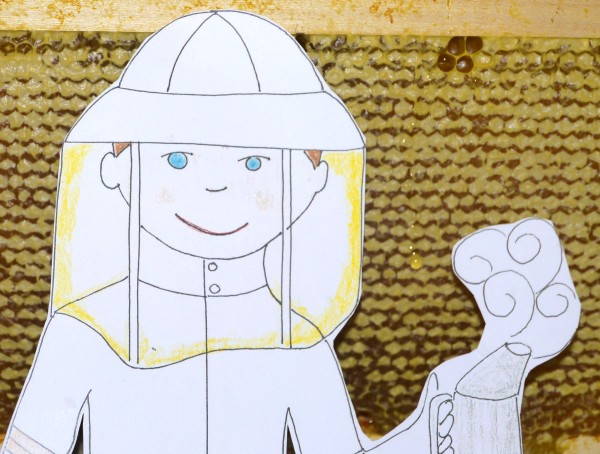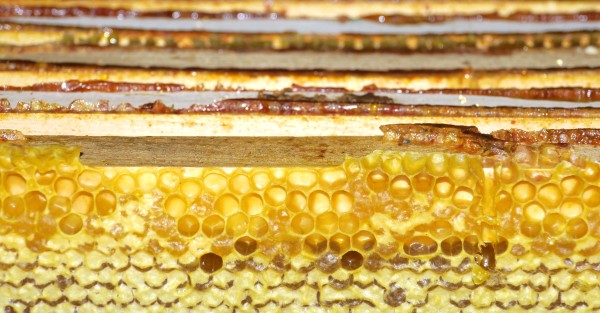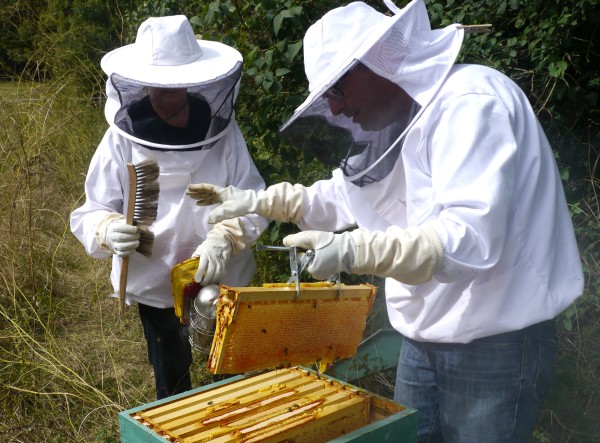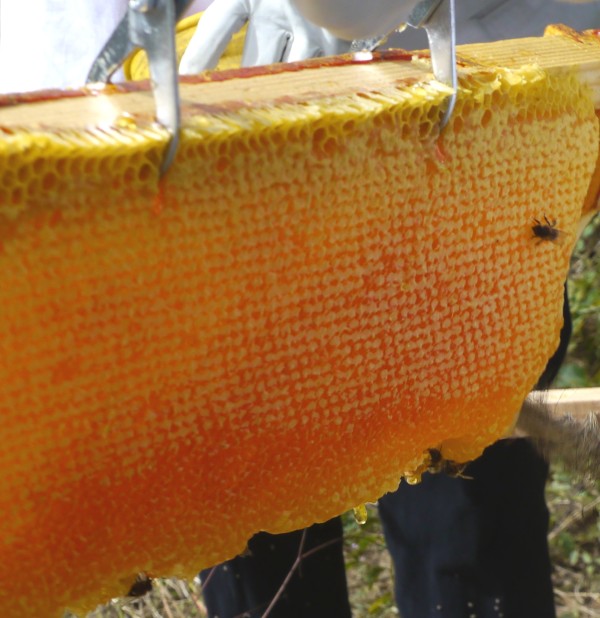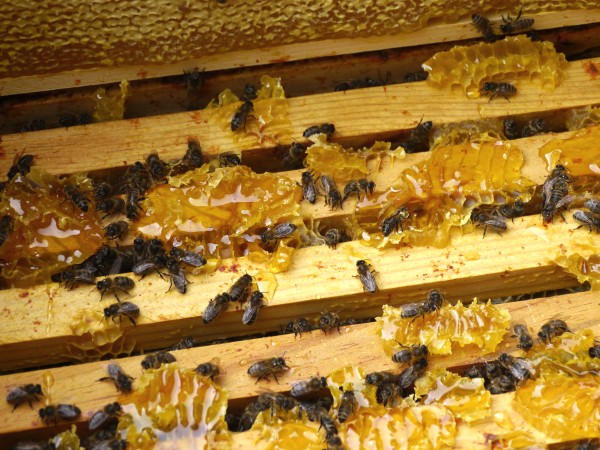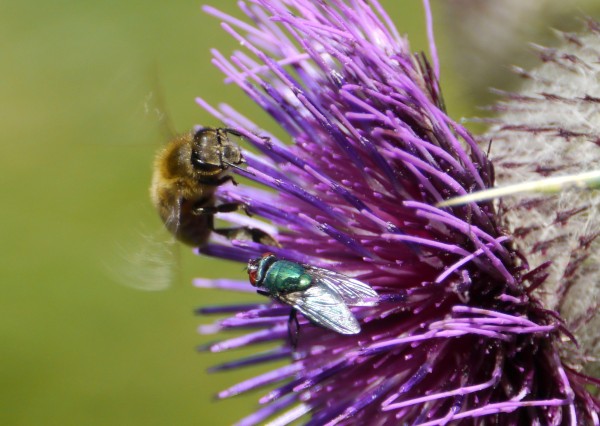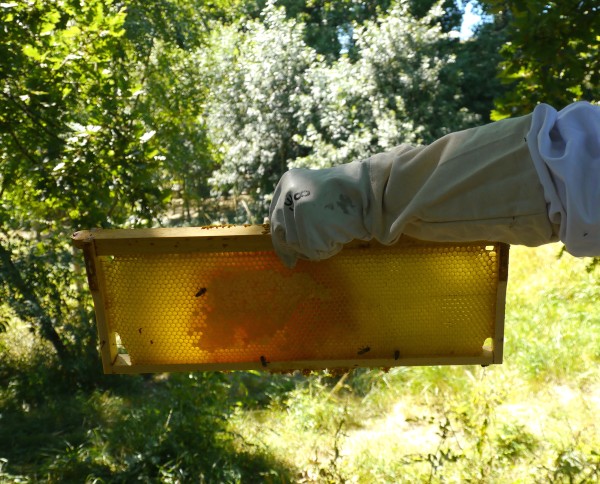Dallas went off on one of her of her Nature Walks, but for the very first time I wasn’t allowed to go along. Genepi and I don’t really understand this pre-occupation with bugs, flowers and such – but normally we go along with it, because whilst she’s prattling around with a camera, we get to play hide and seek in the undergrowth, and chase rabbits.
 Today the focus was in the corner of a nearby sunflower field, where the flowers weren’t big, round and yellow but long, thin and white. Exquisite. And Dangerous.
Today the focus was in the corner of a nearby sunflower field, where the flowers weren’t big, round and yellow but long, thin and white. Exquisite. And Dangerous.
There’s an extensive patch of Thorn Apple (Datura stamonium), also know as Jimson Weed or Devil’s Snare. It is HIGHLY TOXIC and belongs to the Nightshade family. Now I know why we are locked in the kitchen. Imagine Genepi high on some psychoactive stimulant. She’s mental enough as it is.
All parts of this Datura plant contain…
View original post 142 more words













